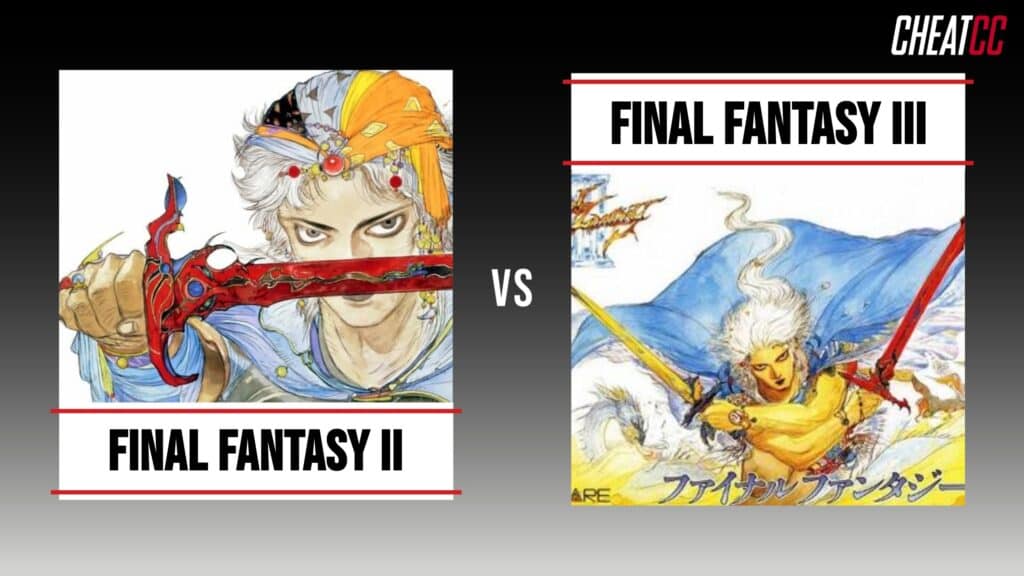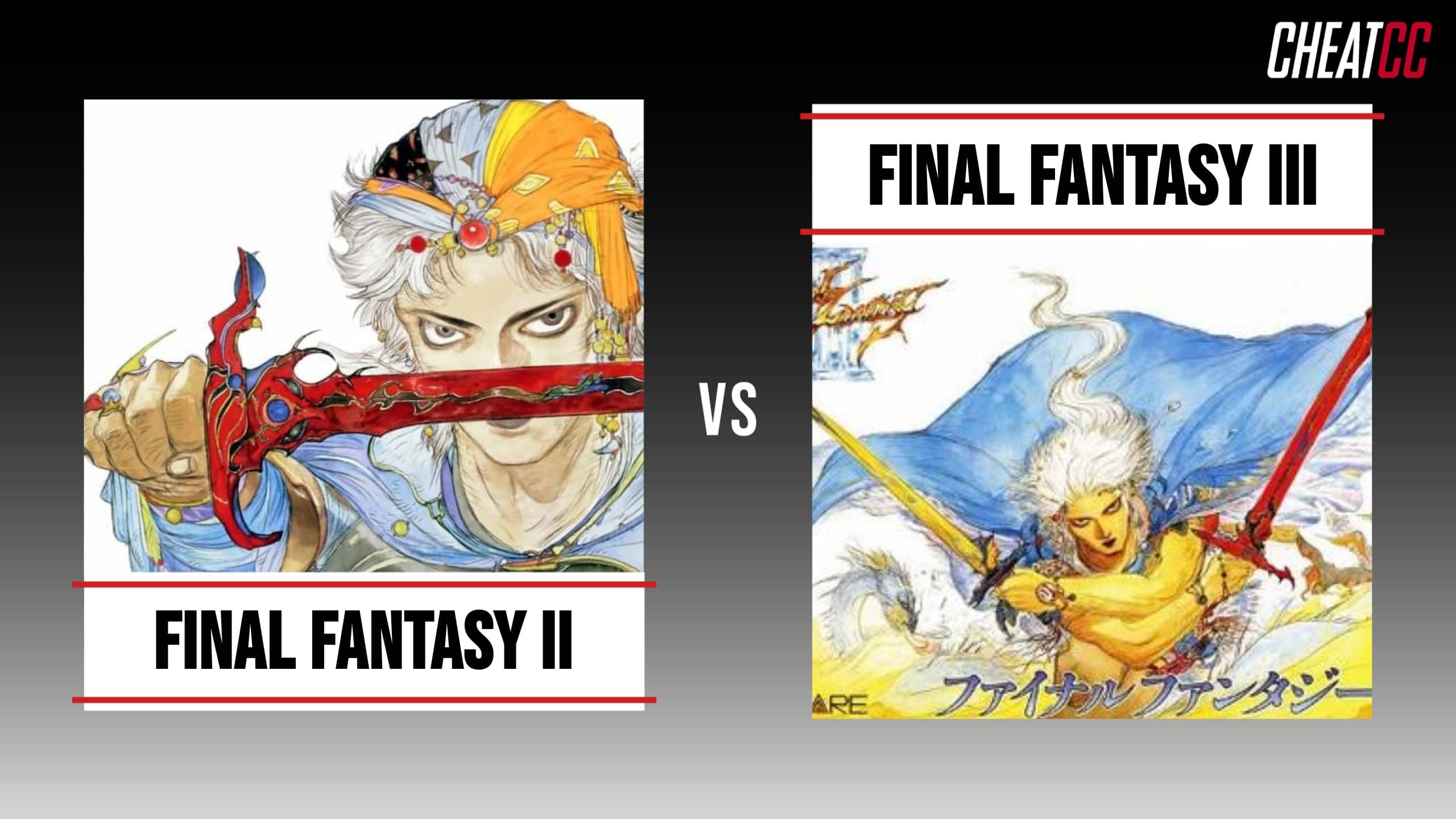Not even Square could have anticipated the runaway success of the original Final Fantasy, which both established the core mechanics of the long-running franchise and the tenets of JRPGs as a whole. Along with Dragon Quest, Final Fantasy nearly immediately became the premier name in console RPGs, seeing massive success both in Japan and in the West, and even with the name of the series having the word “final” in the title, a sequel was practically a foregone conclusion. However, what few people likely anticipated were the many ways in which every subsequent game in the series would attempt to completely redefine the franchise and evolve it in some way.
The anthology nature of Final Fantasy affords each new game in the series liberties that few other franchises can take. Comparatively, Dragon Quest plays it safe and players mostly know what they’re getting into with each entry. Instead of adopting this approach, Final Fantasy II dramatically changes the leveling system and character progression while also introducing a more fully-developed plot with named characters. Then, as if Final Fantasy II weren’t enough of a shake-up to the status quo, Final Fantasy III comes along and returns the series to its roots in many ways while boldly charting new territory in others. The true question is which of these two original sequels is better, and why.
Final Fantasy II vs Final Fantasy III: Side-by-Side Comparison

If one needs proof of how quickly the Final Fantasy series took off after its initial release, looking at the release dates of its sequels should suffice. The original Final Fantasy‘s 1987 launch was quickly followed up with the release of Final Fantasy II the next year and Final Fantasy III the year after. Thanks to the rapid succession in which the games arrived, Final Fantasy II and Final Fantasy III did not launch on the NES and were, for a time, exclusive to the Famicom. What’s interesting is seeing how Final Fantasy III is actually the last of the first 6 games in the series to arrive in the West, despite the fact that most fans consider it superior to Final Fantasy II.
| Characteristic | Final Fantasy II | Final Fantasy III |
|---|---|---|
| Release Year | 1988 | 1990 |
| Release Platform | Famicom | Famicom |
| Western Release | 2003 | 2006 |
| First Western Version | Final Fantasy Origins (PlayStation) | Final Fantasy III (Nintendo DS Remake) |
| Total Sales | 2.48 million (800,000 on Famicom) | 5.75 million (1.4 million on Famicom) |
| Reveiw Aggregate Score | 74.5% | 78% |
| Total Number of Versions | 16 | 13 |
| Mechanics Used in Other FF Games? | ✅ | |
| Helped Create Other Square Franchises | ✅ |
Final Fantasy II vs Final Fantasy III: 5 Must-Know Facts
Here are 5 must-know facts about Final Fantasy II and Final Fantasy III:
- Final Fantasy II is the first game in the series to use specific characters with names and backstories after the Dungeons & Dragons-style pen-and-paper RPG approach of Final Fantasy‘s “blank slate” of heroes. Final Fantasy III then returns to this model and allows players to craft their dream party and switch their classes at will.
- Final Fantasy II has one of the most controversial character progression systems of any game in the series. Instead of defeating enemies and earning experience that leads to leveling up and stat increases determined by behind-the-scenes dice rolls and random number generation, players develop their individual skills and stats through use.
- Final Fantasy III is the first game in the series to introduce the concept of “Jobs” instead of classes, which allow players to learn and master various skills at will and create their own custom, hybrid class creations. The Job system appears in both Final Fantasy V and in Final Fantasy Tactics, among other series titles.
- The Famicom originals of both Final Fantasy II and Final Fantasy III are significantly more obtuse and unfriendly to beginners than their Pixel Remasters counterparts, making the newer versions of the games available on modern hardware the best version to play. Many of the bonuses of the Pixel Remasters also make Final Fantasy II‘s leveling system less cumbersome.
- Even though Final Fantasy II has more unique versions and re-releases than Final Fantasy III, the third game in the series definitively wins in terms of sales and critical reception.
Final Fantasy II vs Final Fantasy III: Pre-Rolled Characters or Blank Slate
The Light Warriors in the original Final Fantasy are blank templates on which the player can assign identities and classes, but Final Fantasy II dramatically switches this up to feature the series’ first official cast. Firion and his companions make their way through a narrative that is decidedly more complex and elevated than that of the original, which makes it all the more surprising that Final Fantasy III returns to the original’s “blank slate” approach. That said, Final Fantasy III does feature much more detail in its narrative despite the ability for players to craft their dream adventuring party through the Job system.
Final Fantasy II vs Final Fantasy III: Controversial Leveling
The character progression system in Final Fantasy II is great in theory, but many players still find it to be lacking in practice. Thanks to the limits of technology at the time, as well as how drastically different the character progression and leveling are from the original, Final Fantasy II has often been considered to be the hardest game in the series. The more modern versions and re-releases somewhat alleviate the headaches that come with its unique approach to leveling, but needing to sustain damage just to improve HP or use a spell dozens of times to level up just that one magic type is a bit tedious. The complexity of Final Fantasy II‘s leveling has influenced several other notable series, including helping to birth its own franchise at Square with the SaGa series.
Final Fantasy II vs Final Fantasy III: Introducing the Job System
The Job system might be one of the best innovations in RPGs and it arrives courtesy of Final Fantasy III. Rather than assign the player’s party with permanent classes at the adventure’s outset like Final Fantasy, Final Fantasy III has players earn new sets of classes (called “Jobs”) at various critical points in the adventure. Players are free to switch back and forth between Jobs and even mix and match abilities from Jobs to create their own custom classes encapsulating a wide variety of strengths. Having a spellcasting Knight adept with a blade or a magic user that can also summon monsters was radical for its time, and the Job system continues to be one of the best genre innovations to come from the Final Fantasy series.
Final Fantasy II vs Final Fantasy III: Originals or Pixel Remasters?
The original Famicom releases of both Final Fantasy II and Final Fantasy III are harder to come by than their more modern versions, but that doesn’t mean players shouldn’t experience them. Still, the Pixel Remasters may be the absolute best versions of these titles that have ever been available to fans, especially considering the various “Boosts” that make Final Fantasy II‘s leveling systems much easier to handle. That said, even with the “Boosts” and Final Fantasy II‘s more approachable difficulty curve, Final Fantasy III still shines as the better of the two games in the Pixel Remaster series.
Bottom Line
Final Fantasy II has a bit of a negative reputation among players, but thankfully Square Enix has taken some steps to help improve its perception within the series. The Pixel Remasters version of the game helps to smooth its rough edges and highlight the elements that the game absolutely nails, including its great Star Wars-esque story and incredible score. Still, Final Fantasy III is one of the early series games (alongside the original) that holds up regardless of the changes and quality-of-life improvements in modern versions. The Job system and the variety it affords in each playthrough make it worth continually revisiting, and the 3D remake on the Nintendo DS is one of the best re-imaginings of an overlooked game in the West. Final Fantasy II is commendable for the risks it takes, but Final Fantasy III is the better sequel to the original Final Fantasy.
